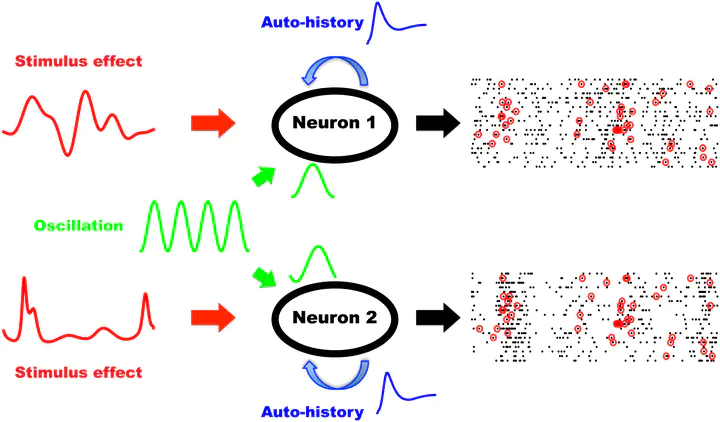
Abstract
Pairs of active neurons frequently fire action potentials or "spikes" nearly synchronously (i.e., within 5 ms of each other). This spike synchrony may occur by chance, based solely on the neurons’ fluctuating firing patterns, or it may occur too frequently to be explicable by chance alone. When spike synchrony above chances levels is present, it may subserve computation for a specific cognitive process, or it could be an irrelevant byproduct of such computation. Either way, spike synchrony is a feature of neural data that should be explained. A point process regression framework has been developed previously for this purpose, using generalized linear models (GLMs). In this framework, the observed number of synchronous spikes is compared to the number predicted by chance under varying assumptions about the factors that affect each of the individual neuron’s firing-rate functions. An important possible source of spike synchrony is network-wide oscillations, which may provide an essential mechanism of network information flow. To establish the statistical link between spike synchrony and network-wide oscillations, we have integrated oscillatory field potentials into our point process regression framework. We first extended a previously-published model of spike-field association and showed that we could recover phase relationships between oscillatory field potentials and firing rates. We then used this new framework to demonstrate the statistical relationship between oscillatory field potentials and spike synchrony in: 1) simulated neurons, 2) in vitro recordings of hippocampal CA1 pyramidal cells, and 3) in vivo recordings of neocortical V4 neurons. Our results provide a rigorous method for establishing a statistical link between network oscillations and neural synchrony.